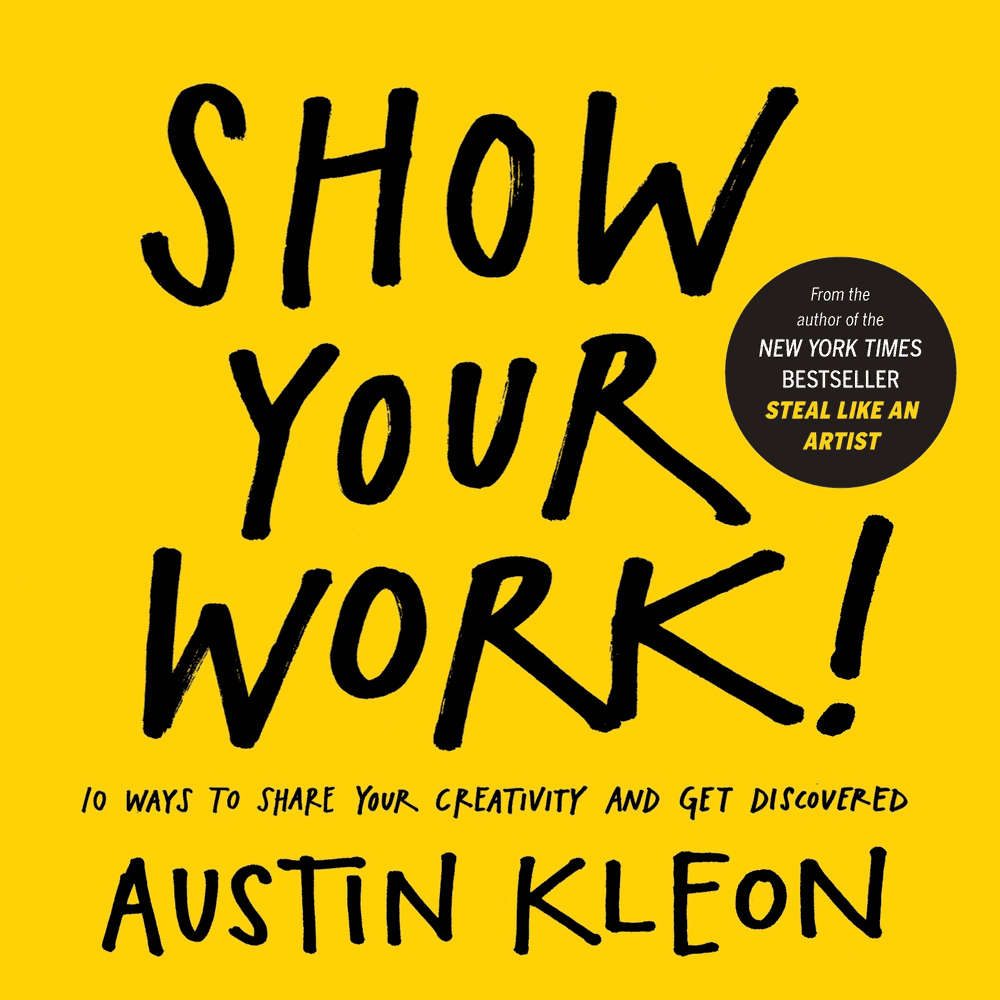Notes from Show Your Work by Austin Kleon (Part 1)
 Show Your Work by Austin Kleon
Show Your Work by Austin Kleon
Though a short book, I experienced many moments of inspiration and have plenty of takeaways from reading this book. As someone who feels like he does not qualify as an artist but wants to be one, I’m keeping this book close by.
I’m taking my time to digest this one, so here is part 1 of my notes. You can find ways to buy the book on Austin Kleon’s website here.
What are the main ideas?
You are no genius. Find a “scenius.” Get rid of the idea of the lone genius who creates brilliant works of art. Take it to the other extreme and view the creation of all art as a collaborative effort. Art is made by what Brian Eno calls a “scenius,” which I think is a chimaera word made from “genius” and “scene”? The point is to view all great ideas and the ensuing creation as being made by a collective of tastemakers who make up an “ecology of talent.” Nowadays, that collective is on subreddits, Twitter, Instagram, and Facebook groups, and there are no gatekeepers.
Be an open amateur. Be open by learning in public. Amateur means an “enthusiast who pursues her work in the spirit of love,” as opposed to someone who does work for extrinsic reasons like fame, career, or money.
“In the beginner’s mind, there are many possibilities. In the expert’s mind, there are few” Shunryu Suzuki, zen monk
Amateurs are all lifelong learners. By sharing what you learn publicly, you are helping others learn from your failures and successes. They are experiencing what you have not long ago experienced, so they can relate much better with you than they can to an “expert.”
Start sharing and look for what people are not sharing. Those voids are opportunities to help elevate your chosen “scenius.”
Find a way to have a near-death experience every day. Quoting Steve Jobs, this will help you “avoid the trap of thinking you have something to lose.” Austin recommends reading the obituaries every day as “near-death experiences for cowards.” Same idea as memento mori. This is what’s missing from my reflection of the magic of a light touch.
Turn your invisible process into something others can see. The process by which you do your work is hidden by default, but that’s what creates a bond between you (the artist) and your audience. To make that process visible, “scoop up the scraps and the residue of your process and shape them into some interesting bits of media that you can share.” Photos of your desk, videos of you working, scribbles on a notebook, etc.
Aim to share what you are working on once a day. Austin has a wonderful way of explaining why “once a day” instead of another cadence: “Seasons change, weeks are completely human-made, but the day has a rhythm. The sun goes up; the sun goes down.” Sharing daily helps you work with Sturgeon’s Law, which states that 90 percent of everything we produce is crap, but we don’t always know what’s going to be in the 90 or 10 percent, so it helps to put things in front of others and see how they react. Just beware not to let sharing take precedence over doing the actual work.
Share something only if you believe it will be helpful or entertaining. Don’t share pictures of your meal, dog, or selfies, but share instead pictures of your work, or how you do the work. Also, share your influences.
In an online-first world, remember to attribute credit properly. If you don’t attribute, you rob both the creator and the people you’ve shared the work with the opportunity to connect. That’s a big disservice, so make sure to attribute. To do it well, think of attribution as “little museum labels next to the stuff you share,” and if it’s online, remember to also use hyperlinks because most people won’t bother googling a name. Austin has a rule that you should never share work if you cannot find the right credit to attribute.
Do your own thing like no one’s looking. The way Austin puts it is that you should “build a good domain name, keep it clean, and eventually it will be its own currency. Whether people show up or they don’t, you’re out there, doing your thing, ready whenever they are.”
Keep telling stories of your work and its value increases. Art forgery proves that people’s assessment of everything is deeply affected by what you tell them about it. Citing the authors of Significant Objects, Austin illustrates this with an experiment they did: they bought a bunch of trinkets from random places, invented a story about each object, and tried to sell those trinkets on eBay afterwards with the stories attached. At the end, they sold $128 worth of trinkets for $3612. I noticed the same phenomenon about the same products of different brands. Artist Rachel Sussman attributes this to the fact that “Personal stories can make the complex more tangible, spark associations, and offer entry into things that might otherwise leave one cold.”
To be continued :)
